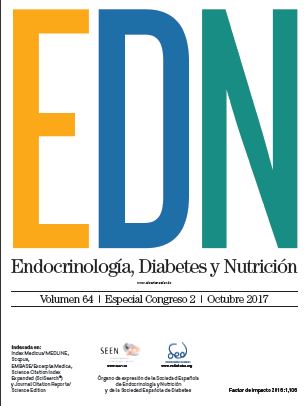303 - SALIVARY CORTISOL REACTIVITY TO FOOD VISUAL STIMULI IN WOMEN WITH OVERWEIGHT OR OBESITY AND BINGE EATING DISEASE
aFacultad de Medicina y Psicología; bFacultad de Ciencias Químicas e Ingenierías. Universidad Autónoma de Baja California. Mexico.
Introduction: Stress can cause binge episodes in persons with binge eating disease (BED). Stress elevates cortisol, and individuals with BED exposed to stress have exaggerated cortisol reactivity to stress. Cortisol increases stress-related food intake and obesity risk.
Objectives: To determine salivary cortisol reactivity to food visual stimuli in women with overweight or obesity (OWOB) and BED and its relationship to weight stigma.
Methods: Experimental controlled trial. The S-EDE-Q questionnaire was used to diagnose BED, and fat stigma and depression were estimated by the Stigmatizing Situations Inventory and the Beck Depression Inventory, respectively. Four groups were stratified by the presence or lack of OWOB and by the presence or lack of BED. All groups participated in the intervention, a control video (7,5 minutes of neutral imagery), and an experimental video (7,5 minutes of energy dense foods images).
Results: A total of 57 women were recruited; 47.4% met criteria for BED. 24.6% of participants had normal weight, 28.1% had OWOB, 19% had normal weight and BED, and 27.6% had OWOB and BED. The most stigmatized were those with BED and had OWOB. Women with lower stigma scores (below the 25th percentile) had higher levels of salivary cortisol (p = 0.038). Women without BED and with low stigma scores had significantly higher salivary cortisol after both the control and experimental videos (p = 0.05). Women with BED had higher EDE-Q, Beck, and weight stigma scores, and a lower cortisol response to visual stimuli.
Conclusions: Weight stigma is associated with BMI and the presence of BED. There were no differences between groups in the reactivity of cortisol to visual stimuli. Women without BED and with lower stigmatization scores had higher post-stimuli salivary cortisol levels as compared to women with BED and with higher stigma scores.
Acknowledgement: UABC grand 4283.







